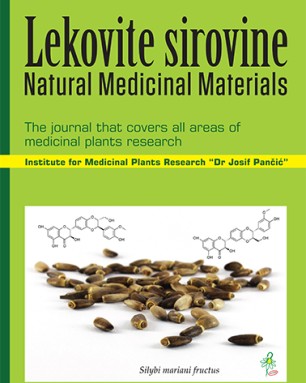nstitute for Medicinal Plant Research “Dr. Josif Pančić” , Belgrade , Serbia
nstitute for Medicinal Plant Research “Dr. Josif Pančić” , Belgrade , Serbia
Institute of Pesticides and Environmental Protection , Belgrade , Serbia
Institute for Medicinal Plant Research “Dr. Josif Pančić” , Belgrade , Serbia
Institute for Medicinal Plant Research “Dr. Josif Pančić” , Belgrade , Serbia
Institute for Medicinal Plant Research “Dr. Josif Pančić” , Belgrade , Serbia
Institute of Field and Vegetable Crops , Belgrade , Serbia
The aim of study was to investigate development of perennial medicinal plant, Satureja montana L., cultivated in dry farming conditions of South Banat, Serbia, with use of black permeable mulch film. In the first two vegetations, the influence of fertilization and crop density on yields of the aboveground plant part (per plant and per m2) and on the content of total essential oil and its major constituents was observed. Overwintering survival, after late performed first harvest, and surviving ratio by the end of the second year of vegetation were 90.1% and 86.9%, respectively. Ratio between fresh and dry biomass (2.4:1) was not affected by tested treatments. The yield per plant was affected by the treatments only in the second year; in lower compared to higher crop density it was 25% higher, and in organic compared to mineral fertilization it was 19 % higher. In both years, crop density did not show significant effect on yield per unit area, while in case of fertilization, this yield was higher in organic fertilization compared to mineral in the first and the second year, 7% and 19%, respectively. The essential oil yields ranged from 0.8% to 0.9%, with the major constituent thymol (48.3-69.4%), followed by carvacrol, p-cymene and β-bisabolene. The essential oil yield did not depend on treatments, while the content of major constituents was significantly affected only by applied crop density.
This is an open access article distributed under the Creative Commons Attribution License which permits unrestricted use, distribution, and reproduction in any medium, provided the original work is properly cited.

The statements, opinions and data contained in the journal are solely those of the individual authors and contributors and not of the publisher and the editor(s). We stay neutral with regard to jurisdictional claims in published maps and institutional affiliations.